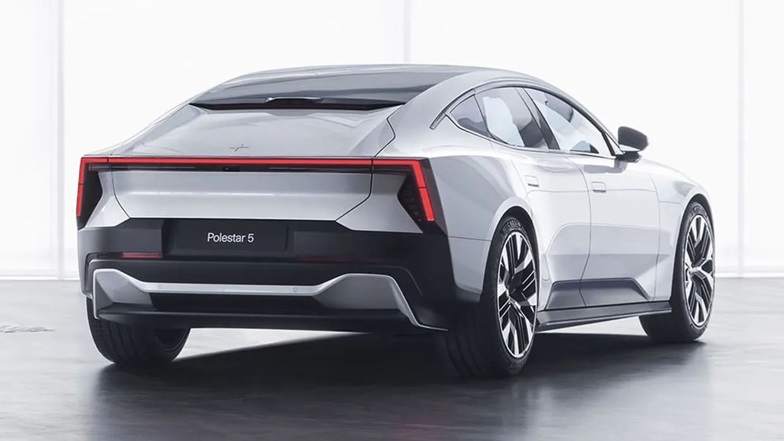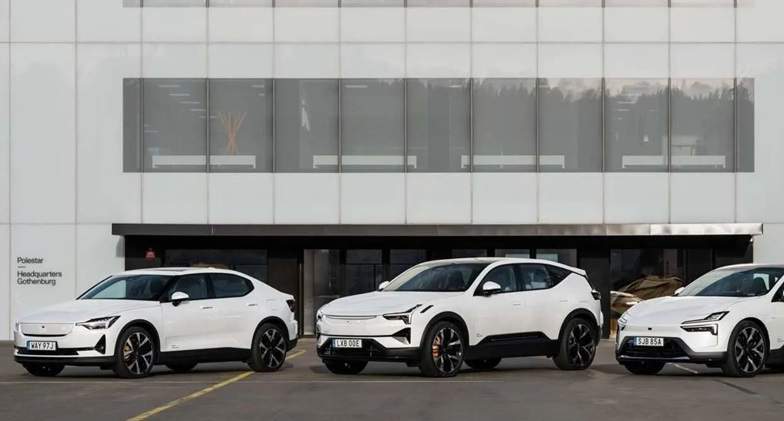Polestar’s Vision for Growth: What’s Next in the EV Revolution
Polestar, the Swedish-Chinese electric vehicle (EV) maker, is making waves with its updated business strategy, aiming for transformative growth through 2025 and beyond. As the brand gears up for an exciting lineup of new launches, including its highly anticipated Polestar 5 and the affordable Polestar 7, it’s clear that this automaker is determined to carve a lasting niche in the EV market. Let’s explore Polestar’s roadmap for the future and what it means for drivers looking to embrace stylish and sustainable electric mobility.

Polestar’s Growth Story: A Look Back and Ahead
Polestar has steadily grown its presence in the EV market, with its Scandinavian-inspired design and performance-focused vehicles capturing attention worldwide. The company’s recent models, the Polestar 3 SUV and Polestar 4 crossover, have significantly boosted its momentum. Together, these two vehicles accounted for over half of Polestar’s orders in the last quarter of 2024, signaling strong customer demand.
With this foundation in place, Polestar is eyeing even greater success in the coming years. The automaker is targeting an impressive compound annual retail sales volume growth of 30-35% through 2027 and aims to achieve positive adjusted EBITDA by 2025. Additionally, it anticipates generating positive free cash flow after investments starting in 2027—a significant milestone for any automaker.
The Polestar 5: A High-Performance Marvel
Polestar’s immediate focus is on the launch of the Polestar 5, slated for the second half of 2025. This luxury sports sedan is based on the brand’s Precept concept and will feature an 800-volt platform, offering exceptional performance and efficiency.
With a jaw-dropping target of up to 884 horsepower, the Polestar 5 is set to challenge heavyweights like the Tesla Model S and Porsche Taycan. It represents the company’s ambition to not only expand its product lineup but also compete with established leaders in the luxury EV segment.
Introducing the Polestar 7: Affordable and Versatile
While the Polestar 5 garners attention for its performance, the Polestar 7 is equally significant for its accessibility. Set to replace the Polestar 2 as the brand’s entry-level model, the Polestar 7 will be a compact SUV and Polestar’s most affordable battery-electric vehicle (BEV) to date.
Polestar confirmed that the Polestar 7 will be the company’s first model manufactured in Europe, marking a strategic expansion of its production footprint. This move is particularly meaningful, as compact SUVs are among the most popular vehicle segments in Europe. By producing the Polestar 7 locally, the company aims to cater to the region’s demand for stylish, practical, and affordable electric vehicles.

A Shift Toward Simplicity and Sustainability
The Polestar 7 will also introduce a new design philosophy for the automaker. From its launch onward, Polestar plans to transition from a multi-platform approach to a single architecture across its lineup. This strategy aims to reduce complexity, lower costs, and optimize investments, all while maintaining the brand’s commitment to premium design and performance.
This streamlined approach aligns with Polestar’s broader vision of becoming a more sustainable and efficient automaker. By focusing on fewer platforms, the company can enhance the overall quality and innovation of its vehicles while reducing its environmental footprint.
The Evolution of Polestar’s Lineup
As Polestar looks to the future, its lineup will undergo a significant transformation. While the Polestar 2 sedan helped establish the brand, its production is expected to wind down around 2027. In its place, the Polestar 7 will take center stage, offering a more versatile and accessible option for drivers seeking a compact electric SUV.
Meanwhile, Polestar is already planning future launches beyond 2025. Following the Polestar 5’s debut, the company has its sights set on introducing the Polestar 6, a sleek roadster convertible, in 2026. These launches highlight Polestar’s commitment to offering a diverse range of vehicles that cater to different lifestyles and preferences.
Why Polestar’s Strategy Matters
For drivers in the 35 to 50 age group, Polestar’s updated strategy offers plenty of reasons to be excited. This demographic often values practicality, performance, and affordability—qualities that Polestar is embedding into its upcoming models.
The Polestar 7, in particular, stands out as an attractive option for families and professionals looking for a stylish yet budget-friendly electric vehicle. Its compact SUV design makes it ideal for navigating city streets, while its electric powertrain ensures lower running costs and environmental impact.
Additionally, the Polestar 5 appeals to those who prioritize luxury and performance, offering a high-powered alternative to traditional sports sedans.
Polestar’s ambitious plans signal a promising future for the company and the broader EV market. By combining innovative design, advanced technology, and a commitment to sustainability, Polestar is positioning itself as a leader in the next generation of electric vehicles.
For drivers considering the switch to EVs, Polestar’s lineup offers an appealing mix of options. Whether it’s the high-performance Polestar 5 or the versatile Polestar 7, there’s something for everyone in the brand’s evolving portfolio.
As Polestar continues to grow and refine its business strategy, it’s clear that the company is not just keeping pace with the EV revolution—it’s helping to drive it forward.
Related Post
